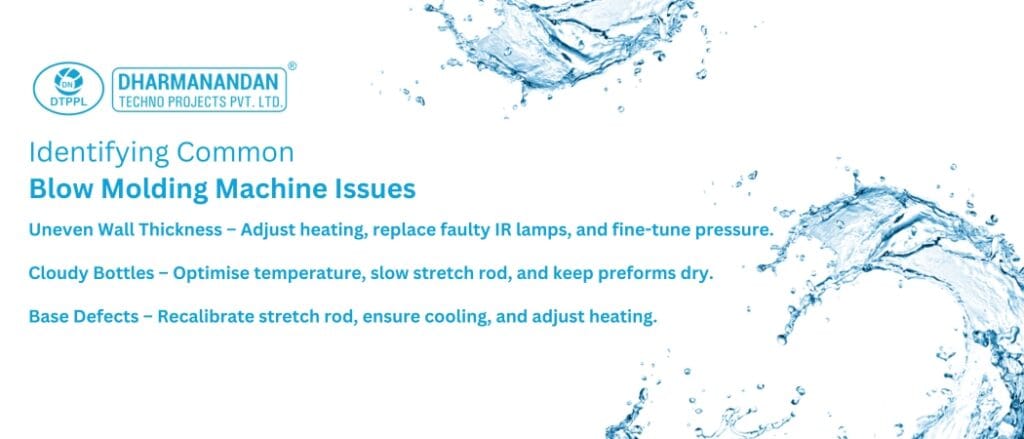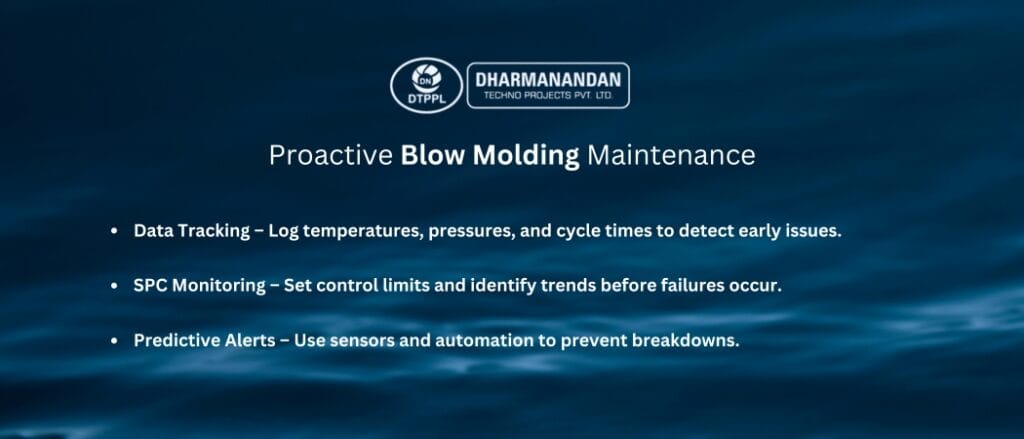
Table of Contents
Conquering Troubleshooting Challenges in Fully Automatic Blow Molding Machines
March 13, 2025
The hum of the factory was once music to the ears. The rhythmic clanking of preforms moving through the system, the sharp hiss of air as molten plastic transformed into perfect bottles, and the relentless speed of production—everything was seamless. But today, something was wrong.
A sharp alarm blared through the workshop. Bottles were emerging misshapen, weak, and fragile. Some wouldn’t even form at all. Panic set in. Every wasted bottle was money lost, every second of downtime was a ticking bomb against deadlines. The pressure mounted, stress built, and the operators stared at the Blow Moulding Machine like a wounded beast, desperate for a cure.
This is the reality of running a fully automatic blow molding machine—a marvel of engineering that can turn raw preforms into the very containers that hold the world’s beverages, cosmetics, and essential products. But when things go wrong, the chaos can feel unbearable.
This isn’t just another technical guide. This is a battle plan. A survival manual. A roadmap to take you from frustration to triumph, step by step, until your PET Blow Moulding Machine is back to flawless operation.
Act 1: The War Begins – Identifying Common Blow Molding Machine Issues
Every battle starts with a clear enemy. In this case, it could be uneven wall thickness, pearlescence, base defects, bottle bursts, or stuck bottles. Each of these problems isn’t just a technical issue—they are the barriers standing between you and success. Let’s break them down.
1. Uneven Wall Thickness – The Silent Destroyer
The bottles emerging from the machine were unstable, with thin spots in some areas and thick, bulging sections in others. This wasn’t just an issue of aesthetics; it was a ticking time bomb for product integrity.
What’s causing it?
- Uneven preform heating.
- Improper stretch rod timing.
- Mold cooling inefficiencies.
- Incorrect blowing pressure.
The Fix
- Use an infrared thermometer to check preform heating consistency.
- Inspect IR lamps—any flickering or burned-out lamps need replacement.
- Ensure smooth preform rotation and ventilation in the heating tunnel.
- Check the stretch rod for wear and adjust its speed carefully.
- Measure and fine-tune blowing pressure.
The battle against uneven walls is fought with precision, patience, and adjustments that seem small but have massive impacts on the Polyethylene Terephthalate Blow Moulding Machine.
2. Pearlescence – The Mysterious Haze
The once-crystal-clear bottles now looked cloudy, milky—almost as if they were wrapped in a ghostly mist. Customers would reject them instantly.
What’s causing it?
- Excessive stretching of PET.
- Incorrect preform heating.
- High moisture content in preforms.
The Fix
- Gradually increase oven temperature, one zone at a time.
- Slow down the stretch rod to avoid micro-tears in the material.
- Adjust pre-blow pressure to achieve better material distribution.
- Store preforms in a dry environment; moisture absorption ruins clarity.
Sometimes, the smallest environmental factors can be the difference between perfection and disaster in a Fully Automatic Blow Moulding Machine.
3. Bottle Base Defects – The Foundation Problem
Some bottles had uneven bases, others had off-center gates, and a few wouldn’t even stand properly. A weak base means disaster for product stability.
What’s causing it?
- Stretch rod misalignment.
- Improper mold cooling.
- Incorrect preform temperature.
The Fix
- Recalibrate the stretch rod timing so it reaches the base at the right moment.
- Inspect and replace any worn-out stretch rod tips.
- Measure mold temperature and ensure uniform cooling.
- Fine-tune heating to avoid over-softening the base area.
In the world of blow molding, the foundation is everything—and mastering the base formation process is key.

Act 2: The Unexpected Battles – Troubleshooting Less Common but Critical Failures
1. Bottle Bursts – The Disaster Scenario
A sudden pop, a splash, and shattered fragments of what should have been a flawless bottle lay at the bottom of the mold. Production halted. Operators looked at one another, unsure where to begin.
What’s causing it?
- Excessive blowing pressure.
- Thin spots in the bottle.
- Material degradation.
The Fix
- Reduce blowing pressure and find the sweet spot where bottles form perfectly.
- Inspect preform batches for defects before they enter the Fully Automatic PET Blow Moulding Machine.
- Monitor and adjust mold temperatures.
The difference between success and failure in blow molding often comes down to microscopic adjustments in the Blow Molding Machine that create massive results.
2. Sticking Bottles – The Frustration Trap
Production was going fine—until it wasn’t. Bottles got stuck in the mold, jamming the system. It felt like an invisible hand had reached in and stopped everything.
What’s causing it?
- Poor mold cooling.
- Mold surface contamination.
- Static electricity buildup.
The Fix
- Flush and clean mold cooling channels.
- Regularly clean mold surfaces to remove contamination.
- Ensure the PET Blow Molding Machine and mold are properly grounded.
- Use anti-static solutions in the molding area.
Every stuck bottle is more than an inconvenience; it’s lost money, wasted time, and operator stress that could be avoided.
Act 3: The Comeback – Data-Driven Mastery & Predictive Maintenance
The greatest blow molding operators aren’t just fixers—they are preventers. They don’t wait for breakdowns; they anticipate them.
1. Data Logging & Trend Analysis
- Use Polyethylene Terephthalate Blow Molding Machine’s HMI or an external data logger to track temperatures, pressures, and cycle times.
- Graph the data over time. If a parameter starts shifting, it’s an early warning sign.
2. Statistical Process Control (SPC)
- Establish control limits for machine performance.
- Spot trends before they turn into failures.
3. Machine Learning for Predictive Alerts
- Implement sensors that alert operators before issues escalate.
- Turn experience into automation, so troubleshooting becomes a rare event.
Success in blow molding isn’t just about fixing problems—it’s about eliminating them before they happen.

Final Victory: The Troubleshooting Mindset
At the heart of every problem is an opportunity—to learn, to grow, and to master the art of fully automatic blow molding machine operations. Troubleshooting isn’t just about fixing errors; it’s about turning knowledge into power.
- Safety First: Never compromise on safety.
- Methodical Approach: Work through problems systematically.
- One Change at a Time: Isolate variables and test solutions one step at a time.
- Document Everything: Your troubleshooting history is your best teacher.
The difference between an average operator and a true expert is the ability to turn stress into strategy, fear into knowledge, and failure into success.

The Call to Action: Elevate Your Blow Molding Game
Struggling with machine failures? Don’t let downtime dictate your success. DTPPL, a leading blow molding machine manufacturer in India, provides reliable, high-performance solutions to keep your production running smoothly.
Upgrade your Fully Automatic PET Blow Molding Machine troubleshooting strategy with advanced training, expert support, and state-of-the-art technology. Don’t just fight problems—eliminate them before they start.
Contact us today to transform your blow molding operation into an unstoppable force!
